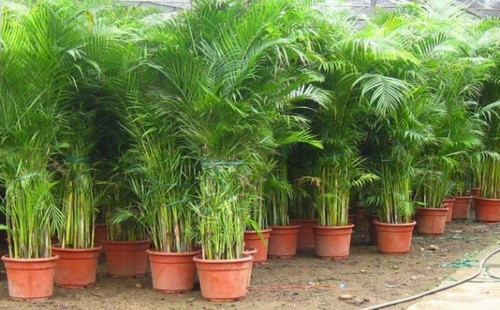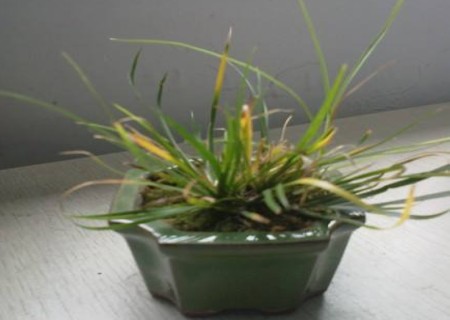How can a potted plant not change soil?
Bonsai should not only be made well, but also do a good job in maintenance and management in the later stage. In the traditional sense, bonsai plants usually need to change soil after 2-3 years or 4-5 years, because green planting for a long time, basin soil will occur varying degrees of consolidation phenomenon, affecting the irrigation and absorption of water and fertilizer, not only a waste of nutrients, but also affect the growth of plants. Changing the pot is often a time-consuming and laborious work, and it will also cause some harm to the normal growth of the plant. So, how can bonsai not change soil?
In order to achieve the effect of changing soil without changing the soil of bonsai, many people have made a series of attempts and explorations. After all, it is troublesome to change the soil, and it would be better to solve the growth problem of green plants without changing the soil. Next, the editor would like to share with you a basin friend's experience of not changing soil in potting and raising ancient lohan pines.
I remember that a basin friend once used an old green pottery basin to raise Luohansong, and usually did not pay too much attention to it. He generally saw that the basin soil could be watered in time when it became dry, while the spring, summer and autumn kept applying a thin compound fertilizer once in each season, and the concentration was controlled below 2%. Not only do not change the soil for a long time, but also never change the soil. However, due to special reasons, the ancient pine and soil in the original pot was changed to another larger flowerpot, which is also a green pottery pot. Decades have passed, the soil has never been changed, and the ancient pine is growing well.
Through the above case, it shows that bonsai green plants can also maintain good growth without soil change. Therefore, this reinforces the confidence and decision that we can cultivate well without changing the soil for bonsai. In order to withstand the test of time and the effect of bonsai culture, the editor also draws the following conclusions through practice.
If you want to keep the pot soil for decades or even never change the soil to ensure that the green plants can maintain a good growth situation, the key is whether there is enough space in the basin for plants to maintain normal growth. at the same time, it can also ensure the normal metabolic function of the plant. Whether there is enough space in the basin mainly depends on whether there is enough space in the basin soil for plant growth.
The soil voids in the basin are mainly determined by two aspects: one is that there are sufficient matrix particles in the constituent elements of basin soil that are difficult to be dissolved by water for a long time, which is also the most basic condition for the formation of basin soil voids; on the other hand, it is the "waste" produced by the root system in the process of metabolism, which is of course a secondary factor compared with the former. As long as these two problems are solved, both air, water and fertilizer can be saved and circulated smoothly in the basin, thus ensuring the normal growth activities of bonsai plants.
It can be seen that if the bonsai does not change the soil, the preparation of the basin soil is very strict and important, and the original does not need to be non-sticky, poor water solubility and good permeability. We can use pure coal cinder because it is low in viscosity and difficult to dissolve in water, which is critical to make the basin soil form voids for a long time; and coal cinder is also rich in a variety of mineral elements, which can provide a large number of trace elements for plants. this is very beneficial for bonsai plants to keep growing normally.
After selecting the matrix, the method of operation is also more important. First of all, the coal slag will be mashed into particles, after removing the powder, and then sifted into two kinds of particles. One size is about 2 centimeters, and the other is 1.5 centimeters or less, set aside for backup.
When putting on the basin, make a drainage layer with broken tiles or large granular stones on the bottom of the basin, and then spread a layer of coal cinder with a size of about 2 centimeters; finally, the bonsai plant is implanted, and the base of the plant is covered with particles of 1.5 centimeters or less. it is best to cover it with slightly larger particles of about 2 centimeters, which can be used as topsoil. However, the filling should not be too full, and keep a certain space between the basin surface and the edge of the basin in order to apply water and fertilizer in the later stage.
For the later day-to-day management, we can follow the ordinary bonsai maintenance management method. But here the editor has a few points to pay attention to:
1. Watering should be thoroughly watered, and it is necessary to adhere to the principle of "dry, wet and dry"; fertilization should adhere to the principle of "thin fertilizer and frequent application", which can be applied once a month in spring, summer and autumn, usually diluted with water, and the concentration should be controlled below 2%.
2. Ensure that the basin bottom outlet should be kept smooth for a long time, especially to prevent the root system of bonsai plants from blocking the outlet, so it is necessary to do a good job of dredging at any time.
3. Due to the continuous growth of bonsai plants, the original pot may not be able to meet their growth needs, so we need to wait for an opportunity to change the basin to ensure that there is enough space to meet the growth and extension of the plant, but we can use the original soil directly without changing the soil. but the drainage layer also needs to be done in advance, and the previous pot in the operation process is similar.
Time: 2019-05-30 Click:
- Prev

Cultivation method of potted Phyllostachys nigra
Phoenix tail bamboo mostly appears in the southern region of our country, so it also likes warm and humid growth environment, not only likes light, but also bears shade, but is not cold-resistant, which is more consistent with the climate environment in the southern region, so it is more suitable for potted planting in the southern region. However, the requirements for soil are still fertile and loose, with strong air permeability and water permeability
- Next

What if the leaves of Acorus calamus are withered and yellow?
Acorus calamus, which seems to be clumps of ordinary weeds, comes from the mountains, especially near the water source, but it is favored by scholars and scholars. However, calamus is a kind of plant with character, and its elegant and elegant posture shows extraordinary demeanor. Put a pot of calamus bonsai on the desk, lingering fragrance among the green
Related
- Fuxing push coffee new agricultural production and marketing class: lack of small-scale processing plants
- Jujube rice field leisure farm deep ploughing Yilan for five years to create a space for organic food and play
- Nongyu Farm-A trial of organic papaya for brave women with advanced technology
- Four points for attention in the prevention and control of diseases and insect pests of edible fungi
- How to add nutrient solution to Edible Fungi
- Is there any good way to control edible fungus mites?
- Open Inoculation Technology of Edible Fungi
- Is there any clever way to use fertilizer for edible fungus in winter?
- What agents are used to kill the pathogens of edible fungi in the mushroom shed?
- Rapid drying of Edible Fungi

